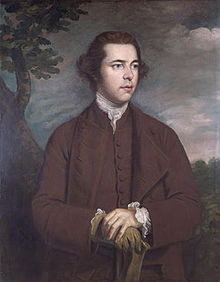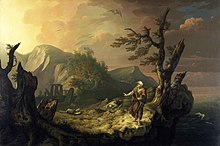Thomas Jones (artist)
By breaking with the conventions of classical landscape painting in favour of direct observation, they look forward to the work of Camille Corot and the Barbizon School in the 19th century.
[1] His autobiography, Memoirs of Thomas Jones of Penkerrig, went unpublished until 1951 but is now recognised as an important source of information on the 18th-century art world.
Despite attending the life class at St Martin's Lane Academy, he remained unconfident of his ability to draw figures convincingly, and in 1763 he persuaded the leading landscape painter of the day (and fellow Welshman) Richard Wilson to take him on as a pupil.
A high-spirited youth, Jones recorded in his journal that he and two rowdy fellow pupils were once rebuked by their master with the words, "Gentlemen, this is not the way to rival Claude".
This period also saw the beginning of Jones’s unconventional habit of producing small landscape sketches in oils on paper for his own amusement.
The works produced there departed significantly from the example of his master, particularly in his watercolour paintings, where he developed a distinctive palette of varying shades of blue.
His first commission in Italy was a landscape entitled Lake Albano – Sunset for the Earl-Bishop of Derry, who became Jones's most important patron.
[citation needed] Upon hearing of his father's death in 1782, Jones, who after six years in Italy was becoming restless and homesick, returned to Britain.
With his new-found financial security[3] Thomas Jones finally married Maria Moncke on 16 September 1789 (though his devout mother also influenced the decision).




